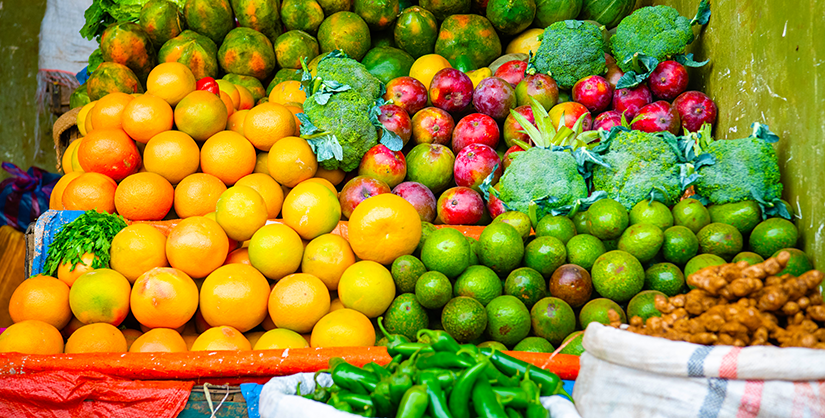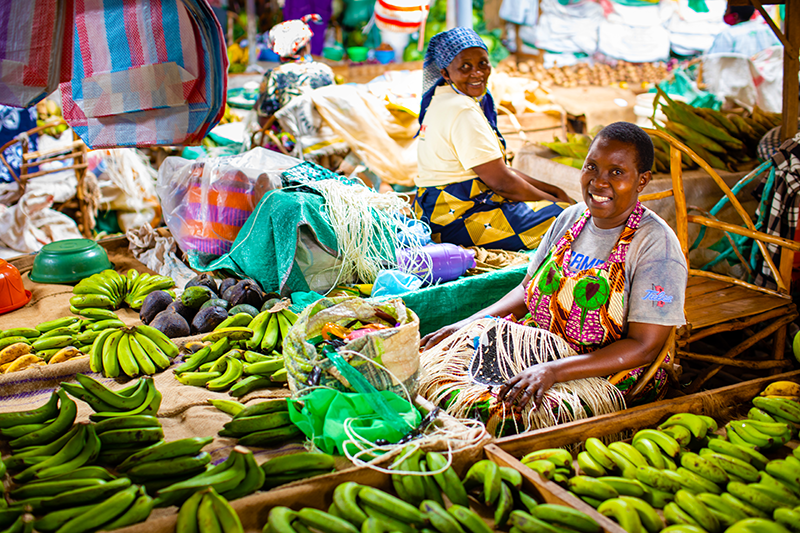From inter-agency collaboration to public-private partnerships, from effective development finance institution involvement to stronger feedback loops — here’s how to accelerate food system transformation.

Food system transformation (FST) is fundamental to human progress. Feeding and nourishing the world. Creating jobs and reducing poverty. Managing the environment. Avoiding catastrophic climate change. Building resilience to shocks. These are the building blocks of human and planetary wellbeing.
Let me put it another way: future generations will find it just as puzzling that humanity was held back by most people having poor diets, as we do that our forebears thought it a luxury that all children should be educated, or women able to vote. It's just as fundamental.

Unfortunately, this transformation is happening much too slowly.
The FAO/GAIN Food System Countdown reports that only 11 of 31 food system indicators are moving in the right direction and none of them are moving fast enough to meet their targets. As Dr. Ibrahim Makayi, the African Union food systems special envoy, said earlier this year, “food system acceleration is now the name of the game”. I could not agree more.
This slowness is caused by many factors. Food system change is not easy. It requires data to tell us where in the system the opportunities and challenges are. It requires policies that are pulling in the same direction to achieve a stated government FST priority. It requires knowledge of how investment and government budgets are currently allocated to food systems. It requires decision making mechanisms that bring multiple perspectives to the table and can translate priorities into financeable actions. It requires financiers to finance those actions.
All of this is happening too slowly. The current upheavals in debt, aid, and trade are threatening to make food system change even slower. Paralysis is one response to the gravity of the current situation. But when we see a fire, we need to run towards it to put it out, not away.
So, what needs to happen?
From observing GAIN’s work in 12 countries over the past three years under our Nourishing Food Pathways programme, four areas ripe for accelerated action are evident.
First, those who work to support FST on the ground, such as GAIN, need to work together more. We must collaborate to share knowledge and resources, tools and learnings, co-construct solutions, and set the tone for broader collaboration. In this way, we can partner with governments more effectively to turn high-level priorities into impactful and investable actions. Food system transformation is much more likely to come from collaboration than competition.
Second, governments and the private sector need to engage much more effectively with each other. The only way to turn smaller aid flows into sustainable food system change is to use them to leverage overwhelmingly larger private sector resources. Too often, the attempts to do this fail because the two parties — public and private — hold wildly unrealistic expectations of each other.
Overlaps of good nutrition outcomes and good business outcomes are not easily found, but they are there. Think of thriving small- and medium-sized enterprises that supply nutritious foods to lower-income consumers, or bigger businesses that have more productive employees because they are better nourished. Effort is involved on both sides to make this happen, but there are many business associations and chambers of commerce for governments to engage with.
Third, development finance institutions (DFIs) at the global, regional, and national levels have to step up. They are a powerful link between public and private because they engage with both on a routine basis, and their funding has been relatively protected from the aid cuts. Unfortunately, they are relatively poor at delivering on food system transformation despite ambitions to do so.
Why is that? Partly because food systems consist of smaller units (smallholder farms, SMEs, consumers) than other systems, such as energy, and DFIs are not good at lending small amounts of money. Also, the metrics of food system change are perceived to be more complex for them to monitor than, say, emissions reduced, or kilometres of roads created.
Fourth, the FST feedback loops are weak. We don’t know whether our efforts are paying off or not. And yet, GAIN receives multiple requests from governments to partner with them to co-develop their national food system monitoring systems. More effort is needed from all stakeholders to set up these systems. The demand is there. Without them we are flying blind.

What does acceleration look like?
What does a world traveling faster toward efficient and equitable food system transformation look like?
It is a world where many more countries set policies, dedicate domestic resources, and implement data and monitoring systems that are better aligned to food system transformation objectives. It is a world where many more governments and businesses work together better to align commercial and food system transformation objectives in an accountable way. It is also a world where DFIs allocate a much greater share of their resources to this task.
All of this must be done in a way that strengthens the local food system ecosystem partners. If partnership is too external and too fleeting, then any initial acceleration achieved will lead to the engine stalling.
Is it possible to accelerate action in times of such gravity? If we want progress in tough times, we have no choice but to rise to the moment. As far back as 1915, Albert Einstein realized that gravity and acceleration were the same thing. Let’s channel that and turn the gravity of the moment into an acceleration towards food system transformation by 2030.
Opinion piece as appeared on Devex, 17 June 2025